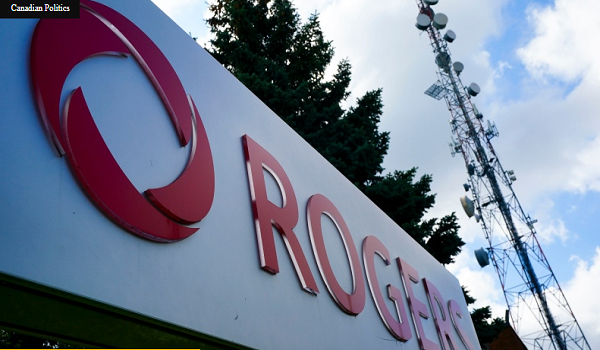Roger is raising $7-billion in ‘structured equity’ deal to reduce debt and still retain control over the infrastructure
Rogers Communications Inc. is raising $7-billion in “structured equity” to reduce its debt, in a deal that will give a financial investor a minority stake in a regional portion of the company’s wireless network.
Rogers will are , while the unnamed investor will take a share of the future income stream from the wireless transport infrastructure. These distributions will fluctuate based on the amount of wholesale data passing through the network, which the company expects to grow over time.
While the payouts to the investor will be considered equity distributions, the deal will not involve selling any Rogers shares. The company expects the deal to close in the fourth quarter.
The deal concerns Rogers’s backhaul networks, which transport data from its towers to its core network. It is separating a portion of this backhaul network into a subsidiary, in which the investor is buying a minority stake. The investor will then receive periodic cash distributions from the subsidiary.
In a Thursday morning call with investors, Rogers chief financial officer Glenn Brandt told analysts that the financing deal means, on balance, paying slightly more than they would have if they had paid down debt over time.
Rogers is paying an interest rate of about 4.5 per cent on the $7-billion of debt it intends to pay off, which comes to about $300-million annually, he said. By using the financing to pay off the debt immediately, the company will save this annual interest, but pay out a “marginally higher” amount in distributions to the investor. He said this extra cost to the company would be “well inside” $1-billion, a figure that is “not a significant increment to our obligations.”
He said that while equity transactions are not tax-deductible, interest paid on debt is – therefore, Rogers will lose the slight tax advantage it would have had paying down debt incrementally.
Despite these extra costs, he called the deal “an excellent opportunity” for the company to reduce its leverage immediately, while retaining power to buy back the equity stake when it suits its balance sheet.
“We maintain control, we deliver, and the impact on our free cash flow and ability to continue to invest in our business carries on, unrestricted by this transaction,” Mr. Brandt said.
The company’s leverage ratio at year end is now expected to be 3.7, down from previous guidance of 4.2. An overleveraged company risks having its credit rating downgraded, and may be limited in its future borrowing options. Rogers had $43-billion of debt (long-term and short-term combined) as of Sept. 30.
Rogers chief executive officer Tony Staffieri told analysts that the financing will accelerate the company’s deleveraging plans as it relates to its $20-billion purchase of Shaw Communications Inc. by a full 12 months.
Rogers also on Thursday posted net income of $526-million, slightly below analyst expectations, compared with a loss of $99-million a year ago. Last year’s figure included a $422-million charge tied to a purchase obligation of an investment. Rogers reported earnings per share of 99 cents, compared with a 19-cent loss last year.
The telecom added 101,000 postpaid and 93,000 prepaid subscribers, slightly above analyst consensus of 98,000 and 84,000, respectively, according to Bank of Montreal analyst Tim Casey. However, the company’s average revenue per user was down by 26 cents.
“The market was competitive during the seasonally busy back-to-school season,” Mr. Staffieri said.
Telecoms are currently facing increasing competitive pressures on wireless prices, as consumers scale back spending and seek cheaper plans.
This quarter, the company launched home internet and TV services across Quebec and signed an agreement with BCE Inc. to become the majority owner of Maple Leaf Sports & Entertainment Ltd. for $4.7-billion. The company’s media business saw an 11-per-cent upswing in revenue, largely earned from its sports-entertainment offerings.
Telecom providers could face some marginal growth challenges in the year to come.
In October, the CRTC raised an issue with roaming prices, and has requested that the telecoms produce an action plan by Nov. 4 with concrete steps to lower consumer costs and improve choice. If the proposals are unsatisfactory, the regulator said it would launch a formal public proceeding on the matter, the results of which might put pressure on the roaming revenues.
Meanwhile, a decision by the federal government to reduce immigration targets could slow telecom-sector growth, and particularly wireless growth, which largely depends on population increases. In a Wednesday note to investors based on expected immigration cuts, Bank of Nova Scotia analyst Maher Yaghi said that current estimates for wireless earnings could be too high.
is
“Over a five-year forecast horizon, this would add up to around 1-3 per cent in missed earnings power that companies would not be able to achieve,” he said.
Shares of Rogers fell about 3 per cent Thursday.
This article was first reported by The Globe and Mail













